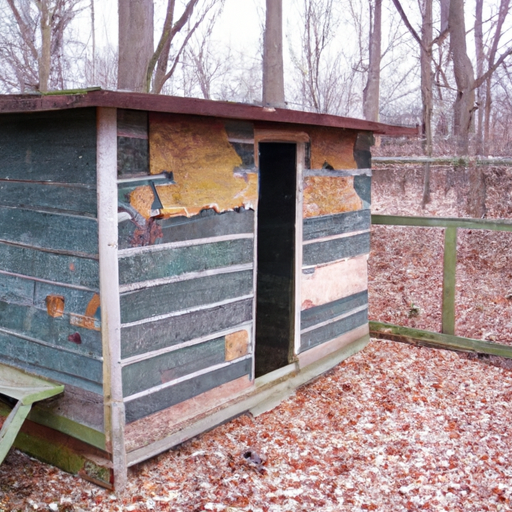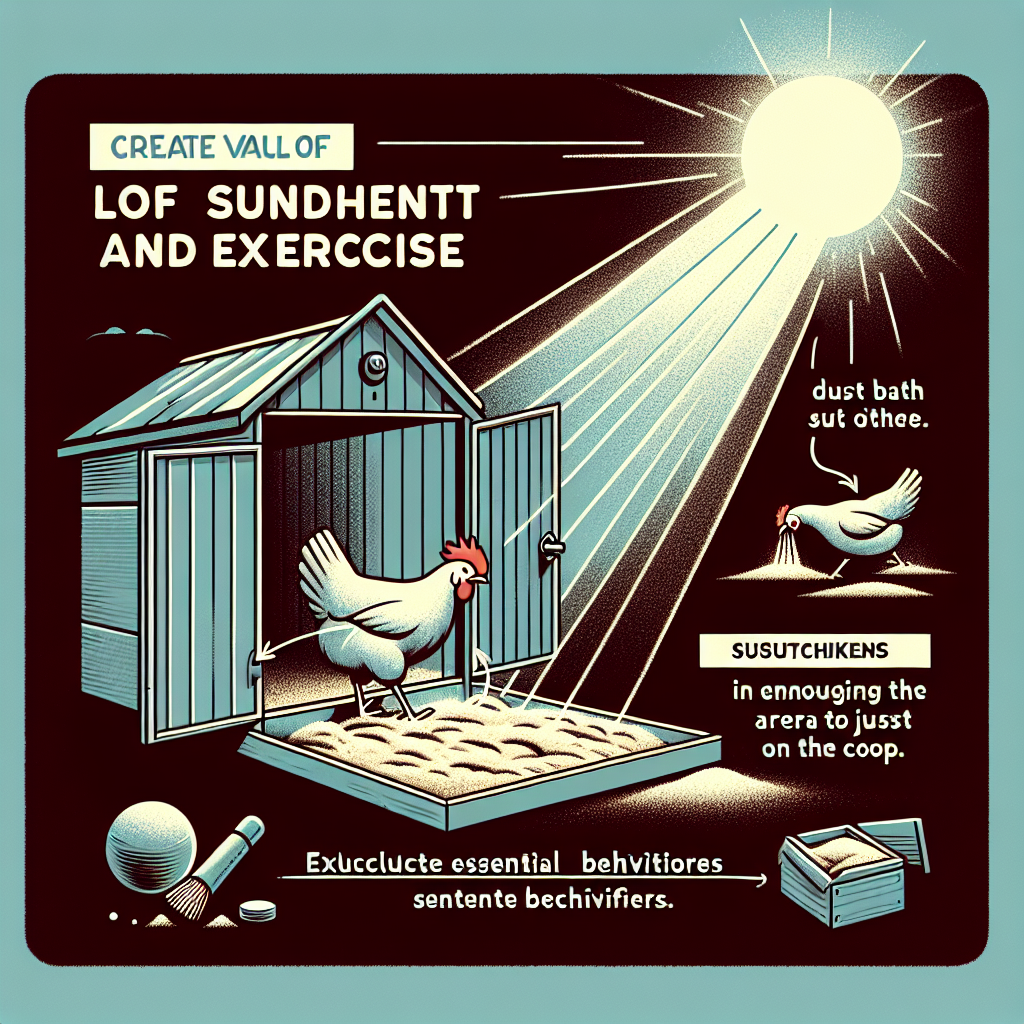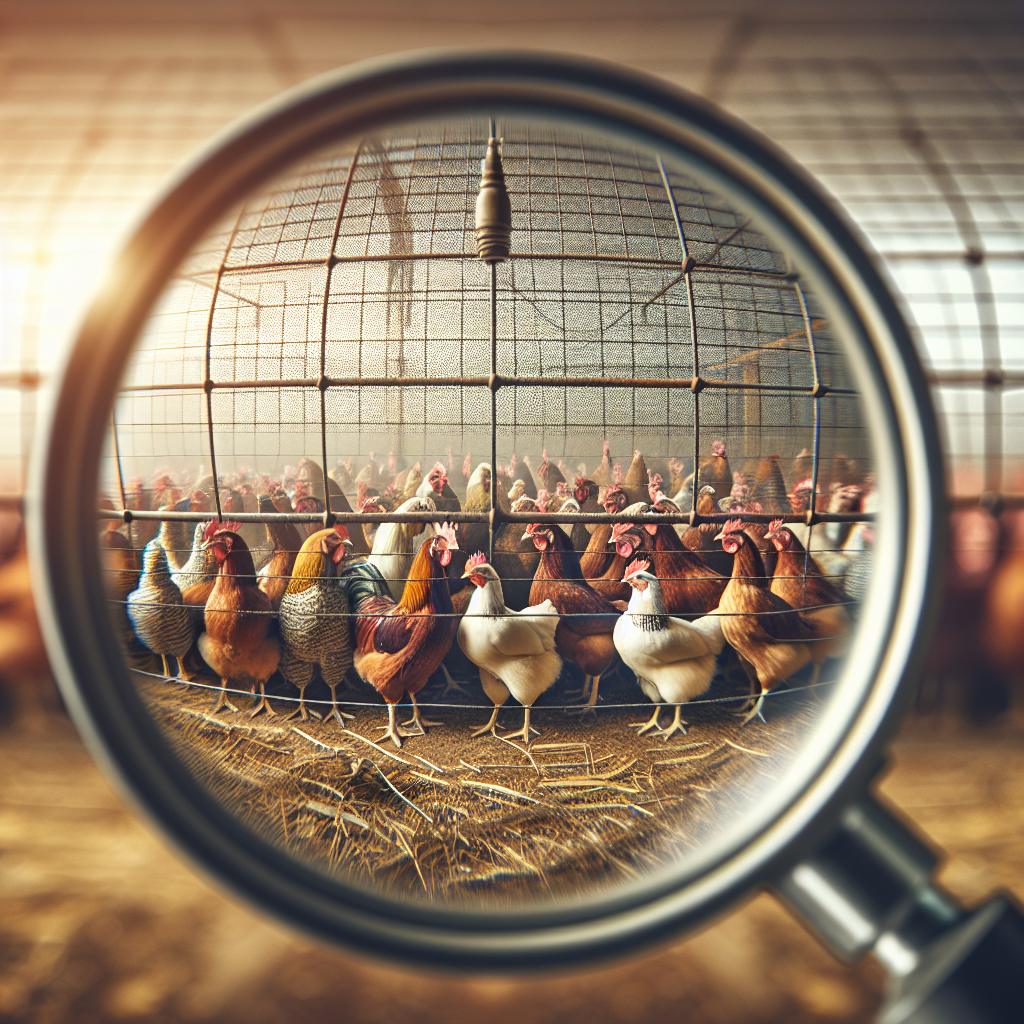If you’re a proud chicken owner, ensuring that your feathered friends are well-protected from the unpredictable elements is of utmost importance. Whether you live in a region with extreme heat, cold winters, or heavy rainfall, understanding the basic shelter requirements for your chickens is crucial to their overall health and well-being. From providing ample ventilation to offering adequate insulation, this article will guide you through the essential steps in creating a safe and comfortable home for your beloved chickens.
Shelter Location
Protection from predators
When choosing a location for your chicken shelter, ensure that it provides adequate protection from predators. This means selecting an area where the shelter is not easily accessible to animals such as raccoons, foxes, and stray dogs. Consider using fencing or wire mesh to reinforce the perimeter and prevent potential intrusions. Additionally, placing the shelter near well-lit areas or installing motion sensor lights can help deter nocturnal predators.
Proximity to water source
Another crucial factor to consider is the proximity of the shelter to a water source. Chickens require constant access to clean and fresh water, so placing their shelter within easy reach of a water supply is essential. This may involve positioning the shelter near an outdoor faucet or installing a water trough or automatic watering system inside the shelter.
Avoidance of low-lying areas
Lastly, it is important to avoid locating the chicken shelter in low-lying areas prone to flooding or excessive moisture. Water accumulation can create unsanitary conditions, leading to health issues for the chickens. Select a site that is well-drained and elevated to ensure the shelter remains dry and comfortable for your feathered friends.
Shelter Size
Adequate space per chicken
When planning your chicken shelter, it is crucial to provide adequate space per chicken. Overcrowding can lead to stress, disease, and reduced egg production. As a general guideline, allow at least 4 square feet of indoor space per chicken. This will give them enough room to move around comfortably, perch, and engage in natural behaviors.
Roosting area
Chickens naturally seek elevated perches to rest and sleep. Therefore, it’s essential to incorporate a roosting area within the shelter. Install sturdy wooden perches at varying heights to accommodate different flock members. A good rule of thumb is to provide a minimum of 8 inches of roosting space per chicken. This will allow them to roost comfortably and avoid potential conflicts.
Nest boxes
Nest boxes are essential for providing a safe and comfortable space for hens to lay their eggs. Each box should have enough room for one chicken and be designed with low front edges to facilitate easy entry and exit. Aim to provide one nest box for every four to five hens. Additionally, ensure the boxes are filled with clean bedding material, such as straw or wood shavings, to promote a hygienic environment for egg-laying.
Shelter Design
Materials
When it comes to the materials used for your chicken shelter, durability and functionality are key. Opt for materials that are strong and resistant to wear and tear. Common options include wood, metal, or plastic. Wood is a popular choice due to its insulation properties and natural aesthetics. Whichever material you choose, ensure it is easy to clean and offers protection against the elements.
Ventilation
Proper ventilation is essential for maintaining good air quality inside the chicken shelter. Without adequate airflow, the accumulation of ammonia from droppings can cause respiratory problems and other health issues for your chickens. Incorporate windows, vents, or openings in the design to facilitate airflow while keeping predators out. Consider using wire mesh to cover these openings and protect them from pests.
Insulation
Insulation is crucial for regulating temperatures within the chicken shelter. It helps keep the interior warm during colder months and cool during hotter periods. Insulated walls, ceilings, and floors can prevent drafts and temperature extremes. Additionally, using appropriate insulation materials, such as foam panels or reflective barriers, will contribute to energy efficiency and provide a more comfortable environment for your chickens.
Roofing
Pitch
The pitch of the roof plays a vital role in ensuring proper water drainage and preventing leakage. Aim for a minimum pitch of 6:12, meaning for every 12 inches horizontally, the roof should rise 6 inches vertically. This slope will allow rainwater and snow to slide off easily, preventing water accumulation and potential damage to the shelter’s structure.
Waterproofing
Choosing the right roofing material is crucial for protecting the shelter from rain and snow. Consider using waterproof materials such as asphalt shingles, metal sheets, or corrugated plastic. These options will effectively shed water and provide a reliable barrier against moisture infiltration. Proper installation and regular inspections are essential to identify and address any signs of leakage promptly.
Overhangs
Incorporating overhangs into the roof design is a beneficial feature for a chicken shelter. Overhangs extend beyond the walls and provide additional protection from rain, snow, and direct sunlight. They also help keep the shelter’s interior dry by preventing water from seeping in through windows and doors. Aim for a minimum overhang of 12-18 inches for optimal coverage and protection.
Flooring
Solid and easy to clean
Choosing a solid and easy-to-clean flooring material is essential for maintaining a hygienic environment inside the chicken shelter. Avoid bare dirt floors, as they can become muddy and pose a risk for bacterial growth and pests. Instead, consider options such as concrete, vinyl, or linoleum. These flooring materials are durable, moisture-resistant, and easy to clean with regular washing and disinfecting.
Bedding materials
Providing bedding material in the chicken shelter offers additional insulation, hygienic benefits, and a more comfortable resting area for your flock. Common bedding materials include straw, wood shavings, sawdust, or dry leaves. Avoid using cedar or pine shavings, as they can emit harmful fumes. Regularly replace the bedding to maintain cleanliness and reduce the risk of bacterial or fungal infections.
Doors and Windows
Secure closing mechanisms
The doors and windows of your chicken shelter should have secure closing mechanisms to safeguard the flock from predators and inclement weather. Consider using latches, locks, or sliding bolts that cannot be easily manipulated by animals. Ensure the doors and windows fit tightly in their frames, minimizing any gaps that could allow unwanted intrusions or drafts.
Natural lighting
Natural lighting is beneficial for both the chickens’ well-being and egg production. Incorporate windows or skylights in the shelter’s design to allow sunlight to enter during the day. Windows with wire mesh coverings offer an added layer of protection against predators while still allowing the passage of light.
Protective netting
To enhance the security of your chicken shelter, consider adding protective netting over windows and vents. This will prevent predators from gaining access while maintaining good airflow. Ensure the netting is made of strong materials that cannot be easily torn or punctured.
Ventilation
Adequate airflow
Good ventilation within the chicken shelter is crucial for maintaining optimal air quality and preventing respiratory problems. Ensure there are enough windows, vents, or openings strategically placed to allow fresh air to circulate. Proper airflow will help remove moisture, heat, and odors, creating a healthier environment for your chickens.
Protection from drafts
While adequate ventilation is important, it’s equally crucial to protect the shelter from drafts. Ensure that openings for airflow are positioned in a way that prevents direct drafts from hitting the chickens’ roosting or nesting areas. This can be achieved by installing adjustable covers or using specially designed ventilation systems that direct airflow away from the sensitive areas.
Ventilation levels
Determining the ideal ventilation levels for your chicken shelter depends on various factors, including the shelter’s size, the number of chickens, and the climate in your area. Monitor the air quality regularly, observing for excessive humidity or ammonia odors. Adjust the ventilation accordingly to maintain a comfortable and healthy environment for your flock.
Lighting
Natural light exposure
Providing access to natural light is essential for the overall well-being of your chickens. Sunlight helps regulate their internal biological clocks, improves mood, and promotes vitamin D synthesis. When designing your shelter, consider incorporating windows or clear roofing materials to allow natural light to enter during the day. Aim for a well-lit environment to support your chickens’ health and productivity.
Artificial lighting considerations
In regions with limited daylight or during certain seasons, supplementing natural light with artificial lighting may be necessary. Artificial lighting can help maintain egg production levels and prevent disruptions in the chickens’ laying cycles. Consult with a poultry specialist or veterinarian to determine the appropriate lighting schedule and intensity for your specific breed and flock size.
Temperature Regulation
Insulation
Insulation plays a crucial role in regulating temperatures inside the chicken shelter. Proper insulation can help keep the shelter warm in colder months and cool during hot summers. Insulated walls, ceiling, and flooring, along with well-sealed gaps and cracks, create a more thermally stable environment for your flock. Consider using materials such as foam panels or reflective barriers to enhance insulation efficiency.
Heating options
In colder climates or during extreme weather conditions, providing additional heating within the chicken shelter may be necessary. Safe heating options include radiant heaters, heat lamps, or ceramic heaters. Ensure that any heating equipment is securely installed, unreachable by chickens, and protected against fire hazards. Monitor the temperature regularly to maintain a comfortable and safe environment for your feathered friends.
Cooling options
During hot summers, it is vital to provide adequate cooling options to prevent heat stress in chickens. Options include natural ventilation through windows and vents, insulation to reduce heat transfer, misting systems, or fans. Ensure the airflow is directed away from the nesting and roosting areas to prevent drafts. Access to shade, such as trees or a covered run, can also provide relief from excessive heat.
Maintenance and Cleaning
Regular inspections
Regular inspections of the chicken shelter are crucial for identifying and addressing any maintenance or repair issues promptly. Check for damaged roofing, loose or rotting materials, secure closing mechanisms, and signs of pests or predators trying to gain access. Addressing these issues promptly will help maintain a safe and comfortable environment for your chickens.
Cleaning schedule
Establishing a regular cleaning schedule is essential to promote good hygiene and prevent disease outbreaks. Remove soiled bedding, droppings, and any debris from the shelter on a regular basis. Disinfect surfaces periodically, paying close attention to roosting bars, nest boxes, and feeding areas. Regularly replace bedding material to maintain cleanliness and minimize odors.
Pest control measures
Implementing effective pest control measures is crucial for maintaining a healthy and safe environment for your flock. Regularly inspect the shelter for signs of pests such as rodents, mites, or fleas. Use appropriate pest control methods, such as traps, predators, or eco-friendly repellents, to keep pests at bay. Avoid using toxic chemicals or pesticides that may harm the chickens or contaminate their surroundings.
In conclusion, providing a suitable shelter for your chickens is vital for their well-being and productivity. Consider the shelter location, size, design, roofing, flooring, doors, windows, ventilation, lighting, temperature regulation, and maintenance requirements when planning and constructing your chicken shelter. By addressing each of these aspects, you can create a comfortable and secure environment that protects your chickens from the elements and promotes their overall health and happiness.




